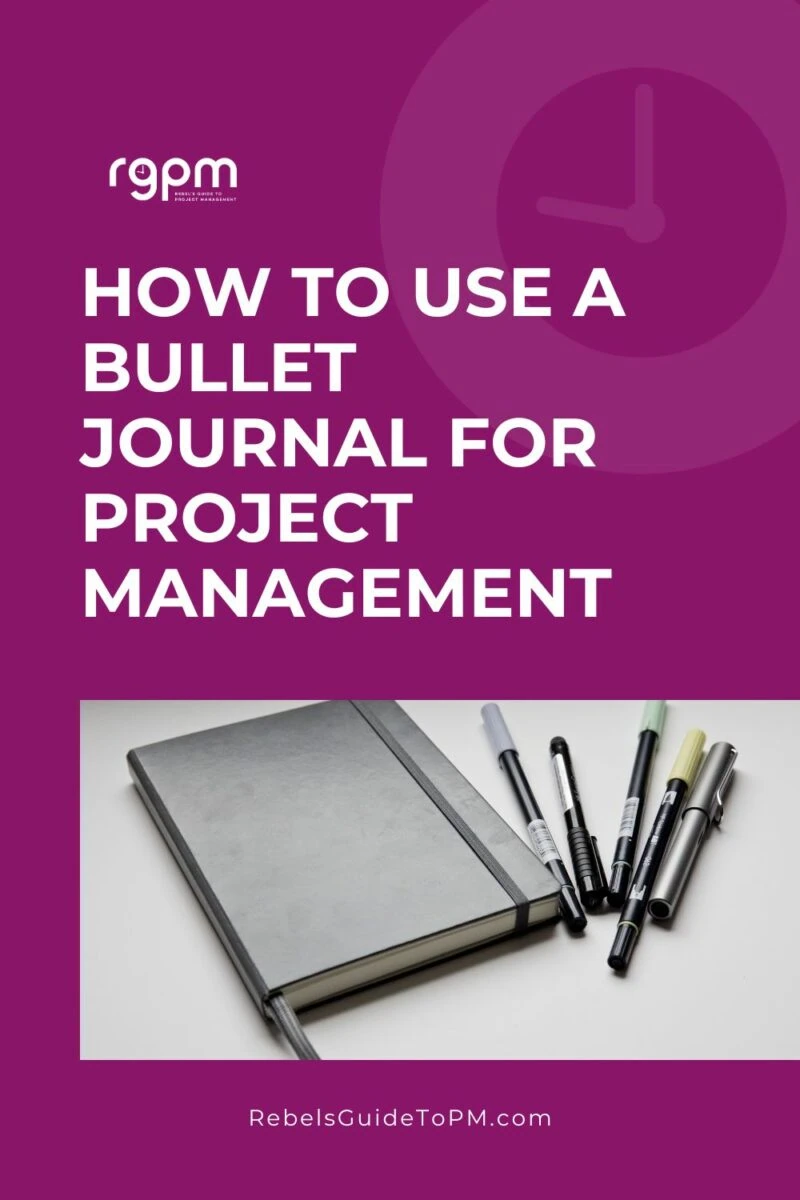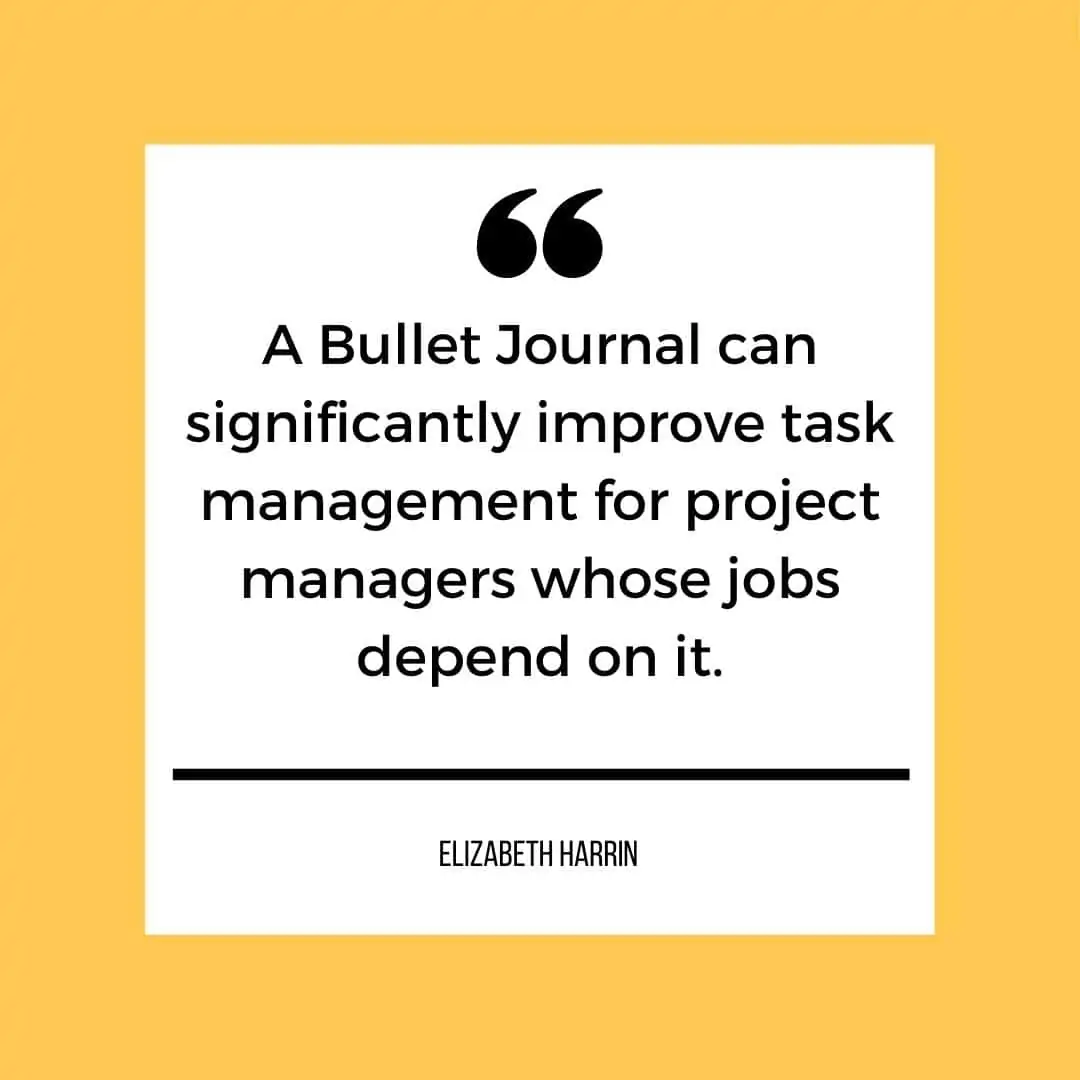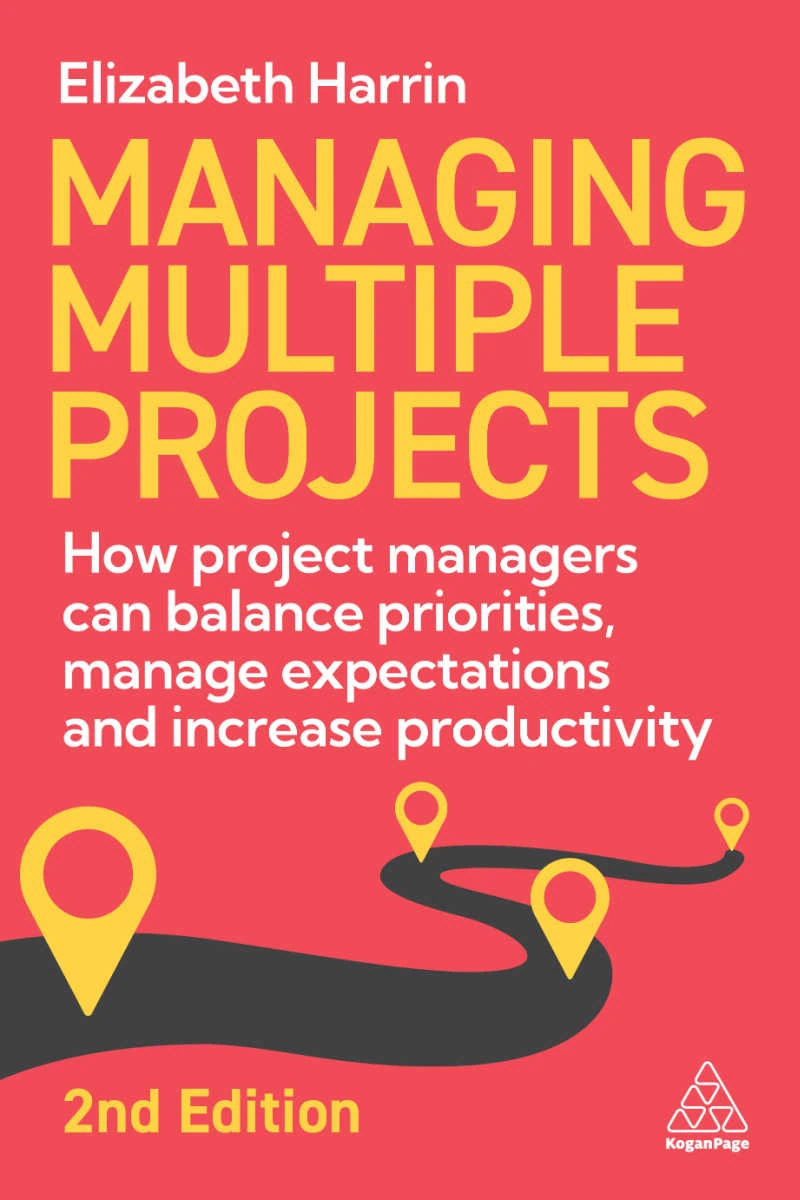How to use a bullet journal for project management
This blog is reader-supported. When you purchase something through an affiliate link on this site, I may earn some coffee money. Thanks! Learn more.
How do you manage your projects? If you’re anything like me, you’ve got a notebook on your desk right now.
Whatever it is you’re managing you’ll probably use, or need, a tool to help you do it. Maybe it’s a Trello board, a Kanban board, a system of sticky notes…Asana, Toggl… a wall calendar and planner, or a combination of them all!
What remains the same is that there is a lot to manage. And a lot to remember. There are different tasks, different meetings, and multiple deadlines to meet.
Ideas, notes, and dates for your diary.
You might have multiple long-term projects on the go, as well as smaller one-off tasks.
And then there’s all the other stuff filling up your headspace…all the good stuff outside of work.
It can be overwhelming.
If you’ve tried other methods of organizing a notebook, could structuring your notepad bullet-journal style be a solution?
It could be the way to manage the feeling of overwhelm and easily and confidently manage your project. Let’s get into why a bullet journal (whether you go electronic or stay on paper) could be the answer.

Bullet journal basics: the productivity tool you didn’t know you needed
The bullet journal system’s creator Ryder Carroll describes his simple method of daily journaling as:
“The mindfulness practice disguised as a productivity system”.
A quick
But, at its most basic level – and that’s where you should start – it’s made up of a simple system of 4 different components:
- the Index
- a Future Log
- the Monthly Log
- the Daily Log.
These components combine elements of the essential project management tools – a task list, notebook, and calendar – in one.
If bullet journaling sounds like it’s too much effort for you, check out my guide for how to structure your notebook for work, to stay organized without having to go full on bullet-y!
Get organized with the Index
Sitting at the front of your journal, the Index page acts as a table of contents, allowing you to quickly and easily find what you’re looking for.
Dedicated indexes can be created separately to manage multiple or complex projects and to make these accessible at a glance.
Your index doesn’t need to slow you down. Bilyana Ivanova from TheCasualReader recommends the ‘threading’ method for physical notebooks.
“I choose symbols to represent different types of content—a dot is for tasks, a circle for events, a dash is for notes, and so on,” she says. “It doesn’t have to follow this specific system; you can choose whichever symbols you like or use color coding instead.
“Then, whenever something on one page connects to another, I write the page number of the related information next to the symbol. This way, I can quickly jump between connected content without flipping back and forth through my index.”
Read next: 20 Practical tips to get (and stay) organized at work
Look ahead with a Future Log
A Future Log is your planner for a quick-to-view look ahead at the next 6 months (or more). You can add important events, deadlines, and dates which is ideal for long-term projects. Important things live here.
If you have a new project on the horizon, drop it in here, along with any important dates to reference as you get closer to kicking it off. This supports your planning system by making sure nothing falls through the cracks and you don’t forget about commitments or longer-term priorities.
Later on you can create project plans for upcoming work, or transfer the details into your project management software.
Stay on track with the Monthly Log
This acts as both a calendar and a task list for the month ahead. The Monthly Log helps you to keep track of what’s coming up over the next few weeks.
It is set across a 2-page spread and makes it easy to see where you’ll be busier and where you have time to take on more. Ideal when you’re managing multiple projects, which is something you can learn more about here.
The monthly spread is a new idea for me but I use a similar view in Outlook. Digital tools aren’t really the go-to product of choice for bullet journaling but if you can’t break away from your screen, then take a look around and see what note-taking app is going to give you the closest results as a notebook.
Manage the day-to-day with the Daily Log
The Daily Log works at a day-to-day level to detail specific tasks, events, and notes. Each action item is listed with a set of symbols making it easy to differentiate between what you need to do and what you need to remember.
The things you need to do are your next actions. Think of this section as your To-Do list for a single day. Tomorrow, you’ll have a new page and a new Daily Log.
Prioritize your tasks with icons
“Important tasks can get buried in the clutter of to-do lists,” says Karolina Dacheva from Businessmap. “Prioritize your tasks. I personally like using signifiers like stars or underlining for high-priority tasks.”
I use the following legend for my tasks:
- A (in a circle): Action
- D (in a circle): means Decision, to be transferred to the Decision log
- Star: Important
- Two stars: Must be done today!
I know other people use a different approach, such as using an empty circle for scheduled meetings, exclamation marks for important tasks or a question mark for something that needs a bit more investigation.
Find a set of icons that works for you and that gives you a structure you can carry forward on every page.
The daily log isn’t a daily schedule in the same way that your calendar is (although if you wanted to use it that way, you could). Instead, it’s more of a prompt for the actions you need to take and important information.
Capture and reflect
Two further elements then combine to make the whole bullet journal system work.
- Rapid Logging – a process of adding short notes to your Daily Log allowing you to capture all that stuff whizzing around in your head on paper.
- Daily Reflections (which Ryder suggests you do morning and evening). Take stock of what’s ahead each day and reassess tasks and deadlines accordingly.
It’s an effective productivity system to help keep you focused on the next important task while not losing sight of the bigger picture.

How do you use a bullet journal in project management?
“I use a two-bullet journal system to stay organized,” says high performance coach Paul Ippolito. “My day-to-day journal captures everything from time blocking, ideas, thoughts, and to-do lists, indexed at the back by topic and page number. Once a week, I review, cull and update the items in this journal, updating larger issues onto their own pages and transferring significant project items to the separate project-based journal.”
Paul also reviews the major project journal once a week and picks 1-2 things he wants to focus on for the week ahead. “This method, refined over years, works well for me,” he says. “The key I think is experimenting with various systems until you find what works.”
You can probably already start to see how the bullet journal works well for project managers. We have to stay organized and have an effective way to track actions and not lose anything – the whole system might be analog but it lends itself to work projects and the work schedule that comes with leading a project.
Use other pages in your journal for meeting notes or a brain dump following a conversation with colleagues. Create a list of contact information for key stakeholders Then reference those in the index.
But beyond these basic components and your personal preferences for extra info is where the bullet journal comes into its own.
Collections
Collections are groups of individual tasks and notes that are joined by a common theme. So, a particular project or topic can be pulled together in one place rather than scattered throughout your journal. This makes it super easy to see everything related to the project in one go.
Collections can span as many pages as needed and are all referenced in your Index.
For example, I have a collection centered around the professional development training I want to do as part of my personal goals.
Migration
Migration is the way that the bullet journal system gives you the headspace to think more clearly.
Migrating tasks means you simply move them to a more relevant place. This might be to your next page of Daily Logs, your next Monthly Log, the Future Log, or to a Collection. Or even out of the bullet log when the time comes for your project management process to take over.
“I find the best way to leverage the simplicity of a bullet journal and integrate it into a more structured project management platform,” says Elisa Montanari, from Wrike. “So, I might quickly jot ideas, tasks, and quick reflections down during the day, then transfer high-level project tasks or deadlines from the platform into daily and weekly spreads.”
What about those tasks that keep getting bounced? Once you’ve moved an unresolved task along for several days in a row, you’ll start to work out whether it’s as important, whether it’s blocked by something else, or if it simply isn’t needed anymore.
Don’t think of migration as extra work. Yes, you have to move tasks around and that time might be better spent doing them. Instead, look at migration as a way to help you to weed out the tasks that are causing distraction from what you actually need to be doing.

Bullet journals in practice
Many project managers already use bullet journals effectively.
A survey carried out by Bullet Journal in 2016, asked 205 project managers specifically about how effective they found bullet journaling for their work.
And 77% stated that it made managing tasks easier or significantly easier as a project manager.
They recognized that “Project managers need an entirely higher level of organization than most.”
(That’s the truth!)
The results of the survey concluded that the bullet journal can “significantly improve task management for professionals whose jobs depend on it.” So, it must be doing something right!
Go online with a digital bullet journal
“What also works for me is combining both digital and traditional methods to keep track of my projects,” says Bilyana. “You can’t copy and paste links in a physical notebook, right? That’s why I use both: one for more sporadic note-taking throughout the day, and the other online, where I can organize resources in a database.”
If you’re not a paper person, look into online tools and apps that will help you organize your thoughts digitally.

Why is bullet journaling so good for project managers?
A journal for project management might seem like overkill. I mean, you probably already have a notebook. But isn’t that filled with chronological notes, whether you use OneNote to keep your digital records straight or a paper notebook?
A bullet journal helps you layout your ideas in a different way, as well as track ideas for future projects, and reflect on the challenges and lessons learned along the way.
So how is the bullet journal system different from all those other methods you’ve tried before? And why should you give it a go as a project manager?
It’s fast
“For me, time blocking is essential for managing tasks that keeps me disciplined, but not obsessive or too regimented,” says Paul. “I prioritize the 1-2 most important items to do early in the day, while remaining flexible with non-essential tasks and unscheduled things.”
The last thing you need is another time-consuming job to add to the list. And this is part of the beauty of bullet journals. They’re fast, and you can block the time to use them, and to do the work.
Rapid Logging means it’s simple to add a new task or deadline or to just get down on paper those random thoughts that pop up while you’re in the middle of something else.
Adding it to the right place means no more wondering where you wrote it down or getting distracted by an email or notification as you pick up your phone to open your app.
It’s mindful
We’re all after better ways to do things that not only impact the work we do but our own wellbeing too. And writing by hand is proven to increase neural activity in the brain that is similar to meditation.
The process of writing things down helps to declutter your mind. Allowing time for your brain to think more clearly about what you’re working on.
It’s not just for work
It’s fair to say that whatever is going on at home will impact work and vice versa, and the mental load is something we can’t ignore.
So, although it’s up to you whether you combine your work and personal to-do lists and plans in your bullet journal, it can be incredibly useful to do so to be able to focus on the right thing at the right time.
“It’s easy to overlook the importance of breaks,” says Karolina. “On a separate page, chalk out leisure activities or personal growth tasks that can be accomplished during breaks to effectively use your downtime.”
Some people choose to have a separate bullet journal for their personal life, as a good way of keeping things straight. Personally, I think work and life are entwined and I want my calendar view to include everything I’m doing on any given day.
It’s flexible
The key to making a bullet journal work for you is to make it your own. The whole method is designed to work in a way that suits you, so you can stay on top of things.
“My best advice is to try different layouts and spreads until you find what works for you,” recommends Elisa. “It’s okay if things get ugly or messy—bullet journals aren’t about minimalist perfection but utilizing the flexible nature of the setup to adapt to you. Don’t try too many things simultaneously to avoid getting overwhelmed and giving up.”
So, if you want to get creative then go for it. If you’d rather it be your own ink smudged, scribbled masterpiece then it doesn’t matter. Do what feels right for you.
How should you get started with a bullet journal?
Step 1: Get a notebook and pen
As simple as it sounds, the first step is to get yourself a new notepad and pen. Don’t just use something you’ve already got, start afresh. Something that’s easy to carry around and access every day, no matter where you are.
A daily planner is probably not the best choice as you’ll find the pages are pre-printed with a structure that you might not find conducive to bullet journaling. However, you can buy ‘original bullet journal method’ notebooks if you want one that has already done some of the organizing for you.
Otherwise, just buy a blank notebook and make it your own.
If you’re going down the digital journal route, have a look at some of the tools available and choose one to start with.
Step 2: Practice the basics
Start small but start properly. Start with the basics of Index, Future Log, Monthly Log, and Daily Log. Watch this intro video to get started.
Break things down into small tasks. Start from where you are and with a clear intention of what you want to achieve. And don’t worry about messing up!
Step 3: Make the time every day
Dedicate the time. Bullet journaling shouldn’t take more than 15 minutes a day. But if you’re already thinking you’ve not got the time then try checking your journal instead of your inbox first thing every morning for a week.
A weekly review will help you migrate tasks and build bullet journaling into the way you do time management.
Next week, do the same!
Make it a habit every day and you’ll soon start to see results.
Your next steps
Get yourself a notebook. I love Moleskin, but also these Stationery Island books.
Then simply get started! You can spend too long wondering how and in practice I found it was easier to get started and tweak my system as I went along.
The bullet journal method offers a unique, flexible solution that combines essential project management components into a cohesive, customizable system. By integrating the Index, Future Log, Monthly Log, and Daily Log, bullet journaling helps streamline your workflow and improve your productivity.
The beauty of the bullet journal lies in its simplicity and adaptability. Whether you choose to stick with paper or go digital, the bullet journal method allows you to capture and organize your thoughts effectively, making it easier to manage both professional and personal tasks. It encourages mindfulness and prioritization, ensuring that you stay focused on what truly matters.

